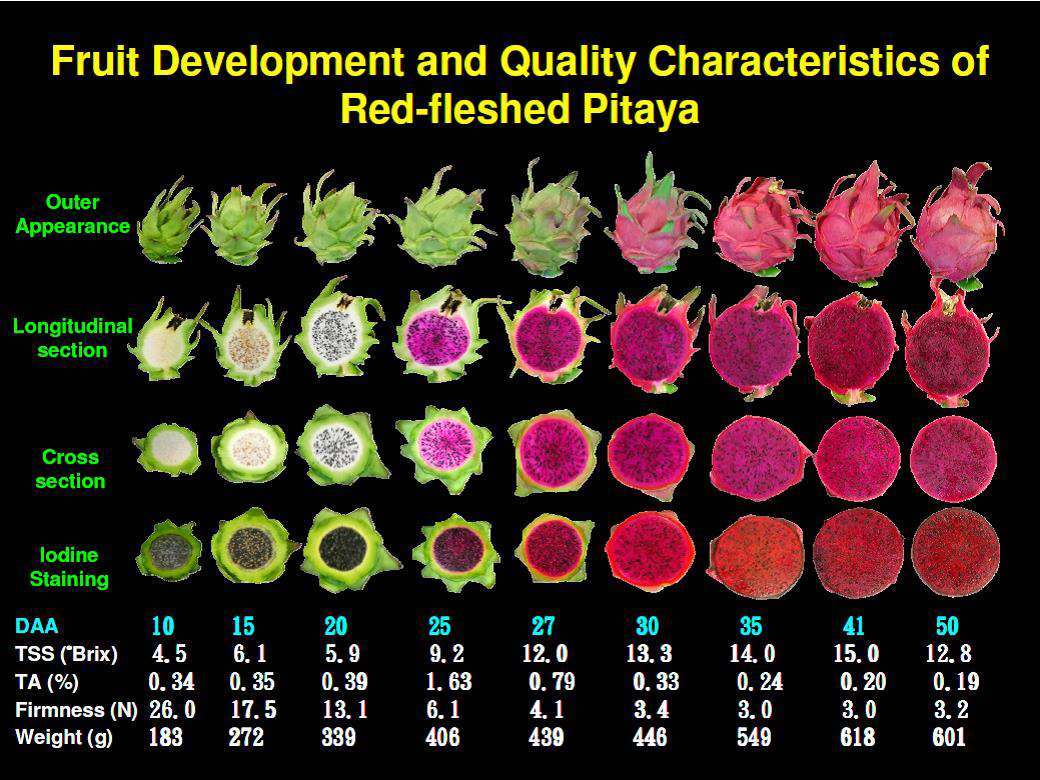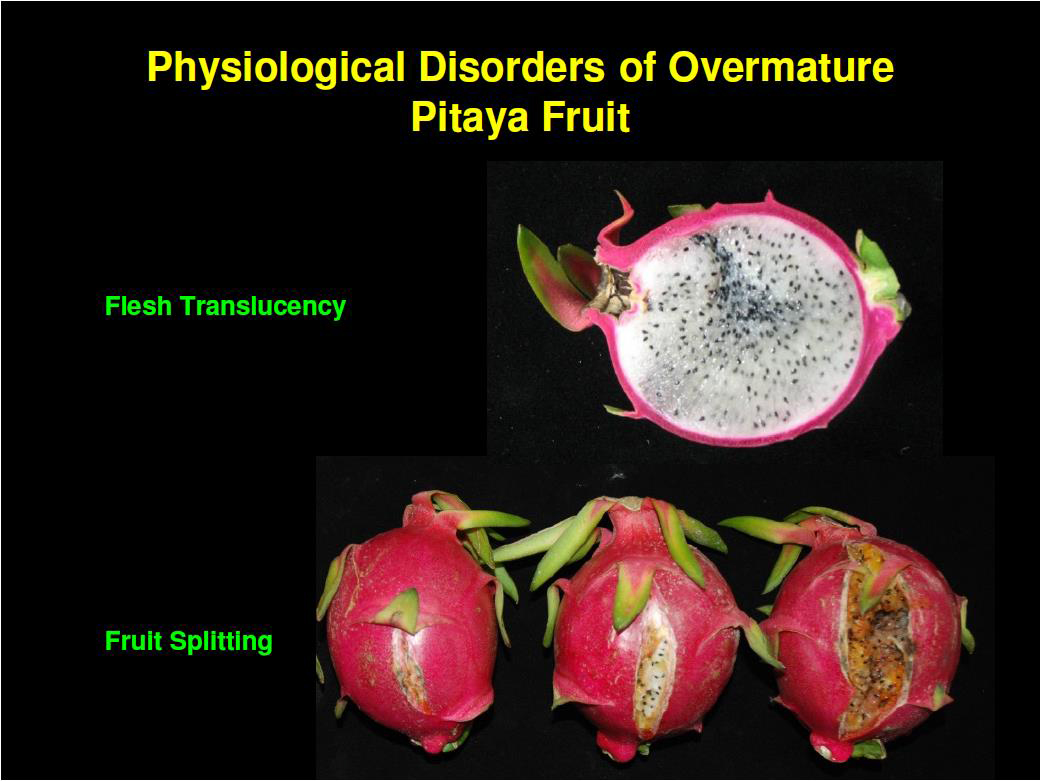Pitaya Fruit Maturity Index Implementation
Maturity Indices of Pitaya fruits for the fresh market
The pitaya (Hylocereus spp.), also known as pitahaya or dragon fruit, is a non-climacteric fruit, which cannot continue ripening process after harvesting and, thus, should be picked when it has attained full ripe stage to ensure fruit quality and sensory flavors. Early harvesting result in low production yields and underdevelopment of quality attributes, whereas delaying harvest even a few days beyond maturity can result in fruit splitting, decline of total soluble solids, flesh translucency (water-soaking), and off-odors. Consequently, an understanding of measurement of maturity is pivotal to postharvest handling of pitaya.
The maturity indices suggested for pitaya fruits include:
- Days-from-flowering: It takes 25-30 days from flowering to color break stage (mean temperature for the study period was 28.1 ± 0.8℃).
- Peel color: The pulp color first changes 3-5 days earlier than that of the peel. Four or five days later, the fruits reach their maximal coloration.
- Total soluble solids (TSS)
- Titratable acidity (TA)
The time between anthesis and ripening of a pitaya fruit is fairly predictable in regions where climate is relatively uniform. Therefore, the principal harvest maturity indices for pitaya are based on days after anthesis (DAA) and intensity of red peel color.
Several quality attributes change during the ripening phase, including flesh softening, increase of TSS, decrease of TA, starch hydrolysis, and accumulation of red pigment in peel and flesh.
- The minimum harvest maturity is 30-32 DAA; however, the fruit quality and yield continue to enhance when the fruit retain on the plant after ripening.
- The optimum harvest maturity is 35-38 DAA for domestic markets.
- The optimum harvest maturity is 32-34 DAA for distant markets. Since SSC or TA alone is not a good measure of maturity, a SSC: TA ratio of 40 has been suggested as an optimum harvest index.

Fruit Development and Quality Characteristics of White-fleshed Pitaya

Fruit Development and Quality Characteristics of Red-fleshed Pitaya

Physiological Disorders of Overmature Pitaya Fruit
Dr. Chun-Ta Wu, National Taiwan University, Chinese Taipei
